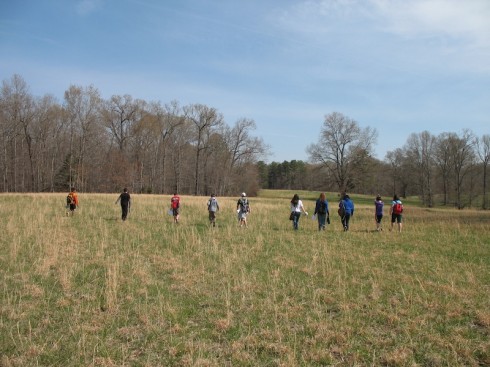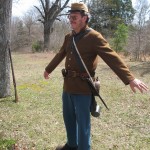The Shiloh National Battlefield is only a couple hours east of Memphis (or west of Nashville), and its proximity to Corinth, MS, and a state park with a hydroelectric dam, make it an excellent place for an immersion trip during the cycle when we study the U.S. Civil War and electromagnetism. Two years ago, on a couple beautiful, sunny days in the middle of spring (early April), almost on the anniversary of the battle, we made the trip.

We drove over on a Tuesday morning, and since our very nice cabins at Pickwick Landing State Park were not quite ready yet, we ate the lunch we’d brought with us at a picnic shelter on the park grounds. The choice of picnic shelter number 6 was serendipitous, because not only was it beautifully located, but just down the hill, at the edge of the water, is an excellent outcrop of fossiliferous limestone.
After unloading at the cabins, we took a short, afternoon drive to see the hydroelectric dam.

The next morning we hiked along the Confederate line of advance during the Battle of Shiloh.


It was a relatively long hike, but useful in that it allowed students a feel at least for the scale of the battle, and the conditions the soldiers endured. There was also a nice museum at the end, with an interesting video and an excellent demonstration from one of the park rangers (you need to book an appointment ahead of time).
Finally, on Thursday morning, on our way back to Memphis, we stopped at the Civil War Interpretive Center in Corinth, Mississippi. The museum is excellent, especially the Stream of American History, which is abstract enough that it makes a great puzzle for students to figure out.

The map below shows the locations of the stops, and has links to the posts about each stop.
View Shiloh Immersion in a larger map




